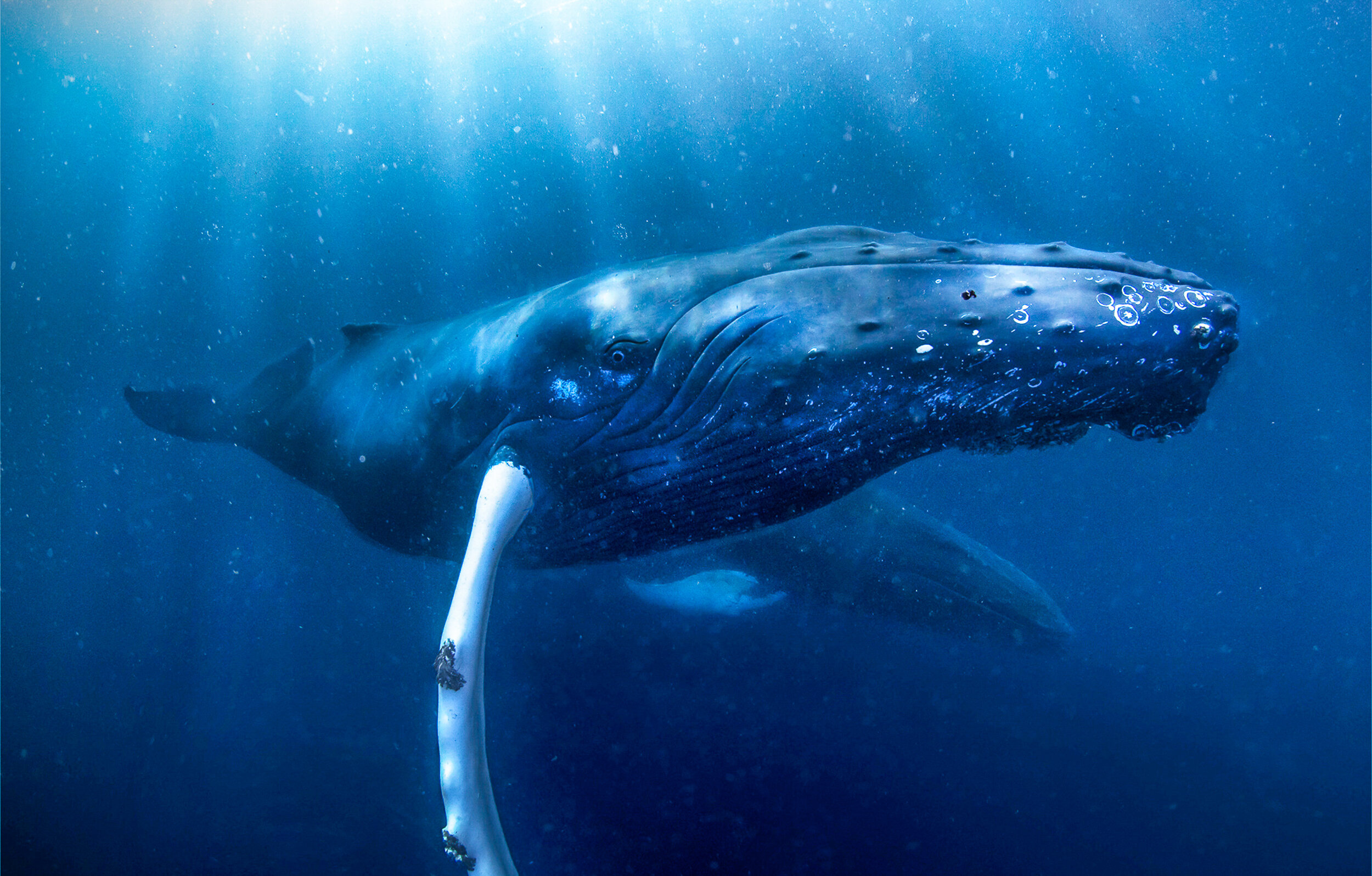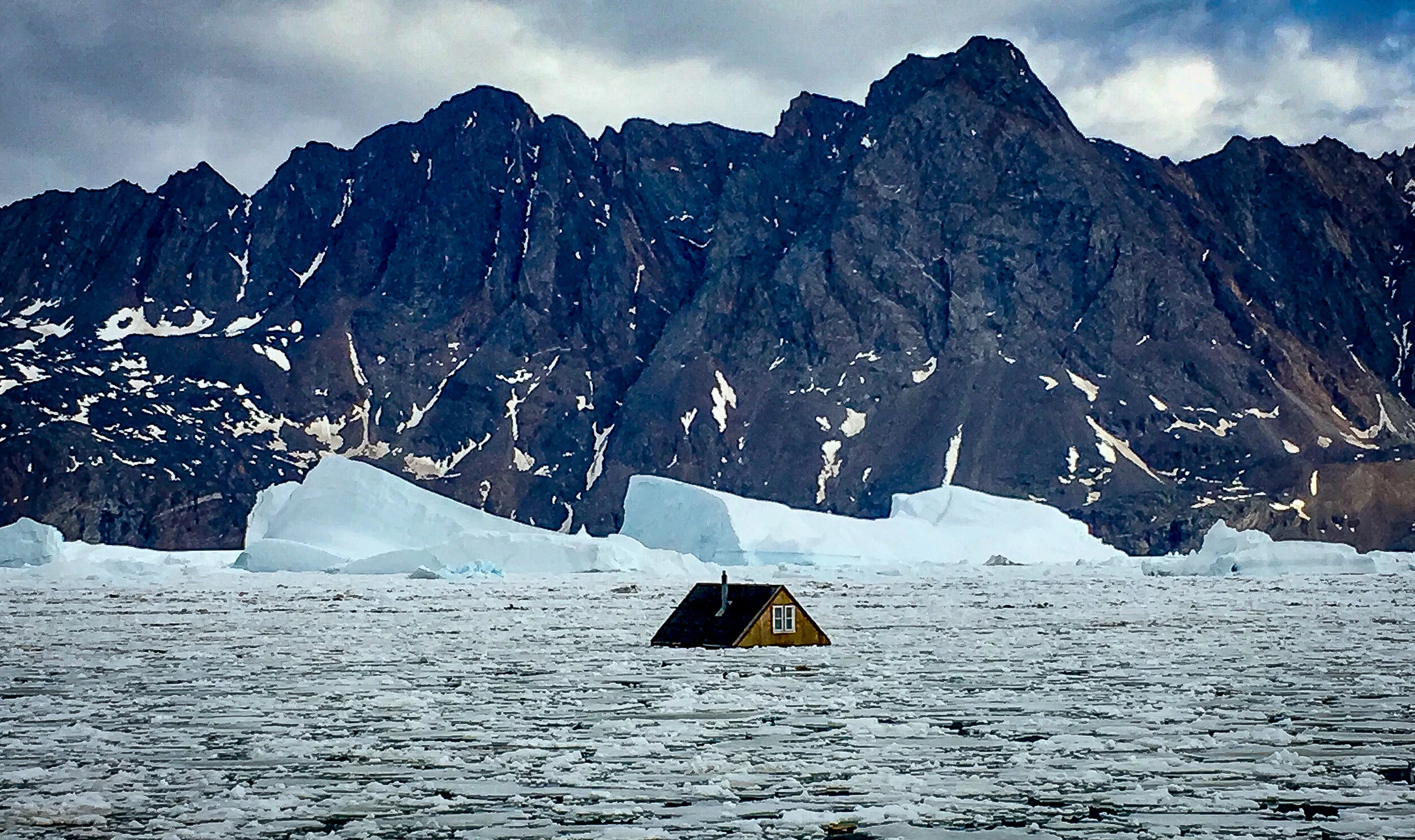Kings Of The Arctic Need Their Hotspots Better Protected
SCIENCE / ENVIRONMENT
Writer: Helge M. Markusson, Fram Center
Photographs: Audun Rikardsen, Kristjan Fridriksson, Nick Cobbing, Kit Kovacs, Jon Aars, Vilborg Einarsdottir
February 2021
Researchers call them Hotspots. The areas of the Arctic waters where marine mammals find their food, mate, grow up and rest. The animals are completely dependent on these hotspots in order to survive, but at the same time the hotspots of Arctic waters experience vast amounts of seasonal and interannual variation. And, it is not just a question of the giants of Arctic hierarchy, the whales, seals, walrus and polar bears that depends on the health of the Arctic hotspots. The same areas are often hotspots for seabirds and animals lower down in the food chain as well.
Between 2005 and 2018, researchers from the Norwegian Polar Institute, the Institute of Marine Research, The Arctic University of Norway (UiT) and others institutions of science and research, tagged a total of 585 individuals of different species with satellite transmitters. Animals whose survival depends on the health of the Arctic hotspots.
By compiling results from tracking studies of most marine mammal species occupying the waters around Svalbard, this diverse international research group has created a vast overview of habitat usage by these highly mobile animals and, as Helge M. Markusson writes in this article, come to realize that their marine habitat needs better protection than what is already in place.
Good overview
The species of animals that were studied were ringed seals, bearded seals, harbour seals, harp seals, walruses, hooded seals, polar bears, narwhals, bowhead whales, humpback whales, beluga whales, fin whales and blue whales.
This is how the researchers can track whales. A projectile is shot from a helicopter that attaches itself to the blubber of a bowhead whale. A radio transmitter is attached to the projectile that sends information about the whale’s location. The signals are intercepted by satellites. JONAA©Nick Cobbing
Between 2005 and 2018, a total of 585 individuals were tagged with satellite transmitters. This enabled researchers to gain a thorough overview of where the animals spent time. Some of the data in this paper are novel, while other data has been spread in various publications. This new study compiles all the available marine mammal tracking results from the whole region. Advanced technology and analytical tools have been used in the work. This provides a foundation on which to give clear advice regarding the management of the waters around Svalbard and along the northern ice edge.
The image the humback whale above was ©photograhed by scientist Audun Rikardsen from UIT, The Arctic University of Norway, while diving in the Arctic ocean east of Svalbard. Those waters are generally considered the most valuable feeding area for the humpback whale species of the world. Humpback whales feed in polar waters and then migrate, up to 25.000 km to tropical or subtropical waters to give birth and breed.
The research included several seal species; ringed seals, bearded seals, harbour seals, harp seals and hooded seals like the one here, resting on ice. JONAA©Vilborg Einarsdottir
Central area
“The marginal ice zone of the Greenland Sea and the northern areas of the Barents Sea, the waters around Svalbard and a few coastal areas in Northeast Greenland were identified as key hotspots for marine mammals and areas with a great diversity of specie.” Says Christian Lydersen, a senior researcher at the Norwegian Polar Institute and one of the authors of the study. Lydersen is also one of the key researchers in several of the field studies that provided the data for this study.
“This article should provide a good foundation for managers that are attempting to determine locations for marine protected areas. However, it is challenging given that the marginal ice zone is clearly a ‘hotspot’ and this area is very dynamic, changing it location both over short and longer time-scales. This will require new thinking in terms of area management related to our ocean areas”, explains Lydersen.
A ringed seal with a transmitter glued to its fur. This records dive data and measures salinity, temperature and the seal’s location. This information is sent to the researchers via satellites. The transmitter falls off during the seal’s annual moult. JONAA©Kit Kovacs, Norwegian Polar Institute.
A bearded seal is released. It has been tagged with a satellite transmitter and various samples have been taken that provide researchers with information about things such as movement patterns. JONAA©Kit Kovacs, Norwegian Polar Institute.
Everything is connected
The new study describes a number of threats to life in Arctic waters and outlines how everything is connected.
Climate change is most noticeable in the Arctic. Measurements show that there are no other areas on Earth where the increase in temperature is greater.
Warmer oceans and winds are resulting in less and less sea ice. This is disastrous for a number of the species mentioned in the study. For example, the ringed seal is completely dependent on sea ice, which is where it gives birth and raises its young. If this species disappears, polar bears will have trouble finding food. Ringed seals are the polar bears’ most important prey, and perhaps it was this species that originally enticed the first brown bears to wander out onto the sea ice, and which led to the polar bear evolving as a species.
“Without ringed seals, and at least without sea ice, the polar bear faces an uncertain future. At the same time, polar bears in our part of the Arctic also depend on land because they make dens in snow drifts where they give birth to their cubs in the winter. This makes Svalbard, with its good denning areas, with lots of drifting snow despite low precipitation in this Arctic desert, a hotspot for the species. In addition, polar bears also find most of their food along in the marginal ice zone”, says Jon Aars, who is the lead polar bear scientist at the Norwegian Polar Institute.
Harp seals on an ice floe in East Greenlandic waters. JONAA©Kristjan Fridriksson
Human influence
Human industrial activities, such as shipping, oil and gas extraction, minerals exploration and extraction on the seabed, tourism and fisheries are the other major threats to marine mammals in the Arctic.
“On and around Svalbard, high levels of some man-made pollutants also represent threats to marine mammals in the area. These compounds reach the Arctic via ocean currents and air currents, especially from industrial areas in Europe”, says Jon Aars.
Female with a newly deployed satellite collar, with her yearling daughter. The collar records activity, percentage of time in water, and temperature. JONAA©Jon Aars / Norwegian Polar Institute
Professor Audun Rikardsen, at UiT – The Norwegian Arctic University concludes: “These data series gives us complete and unique data about vulnerable areas for these mammals. It is crucial to assess how human activity can affect the various species seen in context, also since climate change is particularly noticeable in precisely these areas. That is why future studies will be carried out in a similar way where large data sets are combined from many research teams, to better tell the importance of seeing the connection between several species over large areas.” ▢
Everything is connected in the Arctic world and species depend on each other for balance and ultimately survival. For instance, without ringed seals, and at least without sea ice, the polar bear faces an uncertain future. At the same time, polar bears in our part of the Arctic also depend on land because they make dens in snow drifts where they give birth to their cubs in the winter.
A polar bear watching its reflection while waiting for a seal to hunt. JONAA©Kristjan Fridriksson.
About the project: The study was carried out by a group of international researchers and was funded by the Research Council of Norway, the Norwegian Polar Institute, the Fram Centre, the Norwegian-Russian cooperation on the marine environment, the Bureau of Mineral and Petroleum (Nuuk, Greenland), the Danish Ministry of the Environment and the Institute of Natural Resources in Greenland.
Reference:
Marine Ecology progress series: Hamilton, Lydersen, Aars et. al:
Marine mammal hotspots in the Greenland and Barents Seas
Helge M. Markusson works as Outreach Coordinator at The Fram Centre (FRAM High North Research Centre for Climate and the Environment). Author and columnist. Former journalist of newspapers, radio and TV. Has also been involved in a series of smaller and bigger culture projects. Raised in Northern Norway, living in Tromsø, Norway. Helge is a member of the JONAA founding team.




























